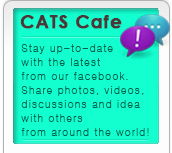Informal Assessment

Home > Service Categories > Assessment > Early Diagnosis
Informal assessments are multifaceted surveys used to discover the interests and preferences of students with moderate to severe disabilities.
They help teachers and parents find the student’s strengths and preferences by observing or interviewing them and people close to them. Here are two of the most common strategies that can be used when assessing the student.
MAPS (Making Action Plans)
MAPS is one way to find the interests of the student. MAPs has been used effectively for supporting students, families, friends, and related personnel (e.g., Special Education Teacher, General Education Teacher, doctors, nurses, psychologist) by inviting them/everyone to talk about the student’s strengths, needs and interests. The facilitators record their discussion and make an evaluation based on the record. MAPs is also widely used when developing an IEP or ITP, therefore, it is important to ask the student directly for his/her opinions.
Questions in the MAPS
1. What is the background of the student? (medical history, family background, school reports)
2. What is the student’s dream? What is your dream for the student?
3. What is the student’s nightmare? What is your nightmare for the student?
4. What does the student mean to you?
5. What are his/her strength and talents?
6. What are his/her needs?
7. What is his/her ideal day? What can we do to make this come true?
Direct Observation and Interview in Class
The second way to assess the student is by observing him/her during classroom activities. The student is able to listen to other classmates in the class and take a more proactive part when finding his/her strengths and preferences. This strategy is more suitable in special day class or with junior high and high school students. Below are some of the questions that can be asked when observing the student. When developing the questions, it/they should be based on the classroom activities and within student’s performance level.
Questions for Direct Observation and Interview
1. Presenting my likes and dislikes.
a. What do I like? (What do I dislike?)
b. What I like the most about the school? (What I don’t like about the school?)
c. What I like about home? (What I don’t like about home?)
d. What activities do I like to do with my friends? (What activities don’t I like to do with my friends?)
e. What do I like to do when I’m alone? (What I don’t like to do when alone)
f. What do I like to do inside? (What don’t I like to do when inside)
g. What do I like to do outside? (What don’t I like to do when outside)
2. What is my dream and hope?
a. What do I want to be?
b. Where do I want to live? (with whom and where?)
c. What do I want to learn in the future?
d. How do I want to live in the future?
3. What am I good at? What is my strength and my weakness?
a. Which subject am I good at?
b. What am I good at? (In what area am I struggling?)
c. What am I good at with my personal activities? (In what area do I need improvement?)
d. What are my strengths in independent living? (In what area do I need improvement?)
The best way to find the student’s preference is by having the individual to experience many activities, meet various people, visit different places and participate in numerous activities. When the student has many opportunities to explore, he/she will be able to discover his/her interests or likes and dislikes. The student could not list or answer to the questions if he/she has not had a chance to experience such activities. The student could share his/her thoughts about exploring new activities in Dream & Hope activities listed in question 2 above. The student’s ability to think about his/her dream is part of the self- evaluation process that is critical when planning for the future.
There is no limit when writing the dreams, but the student should be able to narrow it down to five things that he/she would like to do the most. This process of finding student’s strengths and weaknesses is important especially when developing ITP. Most of the students do well in activities that they find interest in, whereas, students don’t do well when they don’t find amusement. A majority of the students plan their futures according to their strengths and preferences, but some students want to take a further step and learn more about a certain activity or “thing” that they want to do in the future. Then the student can develop a plan to achieve the goal. There may be a large gap between the student’s own image and the actual performance (outcome); therefore, the most critical part is to lead the student to think about his/her future as much as possible.
Summarize or evaluate the student’s assessments that were used for ITP in order to understand his/her performance, strengths, and preference level.












